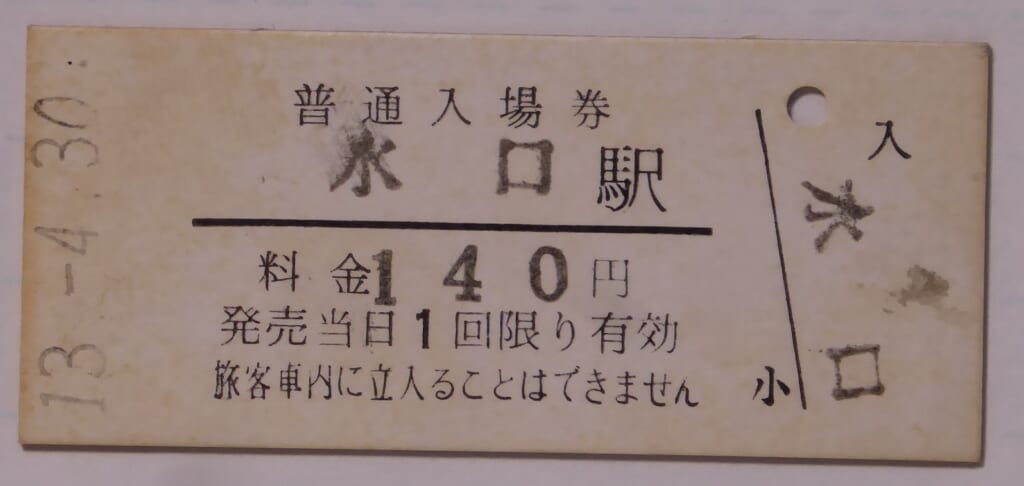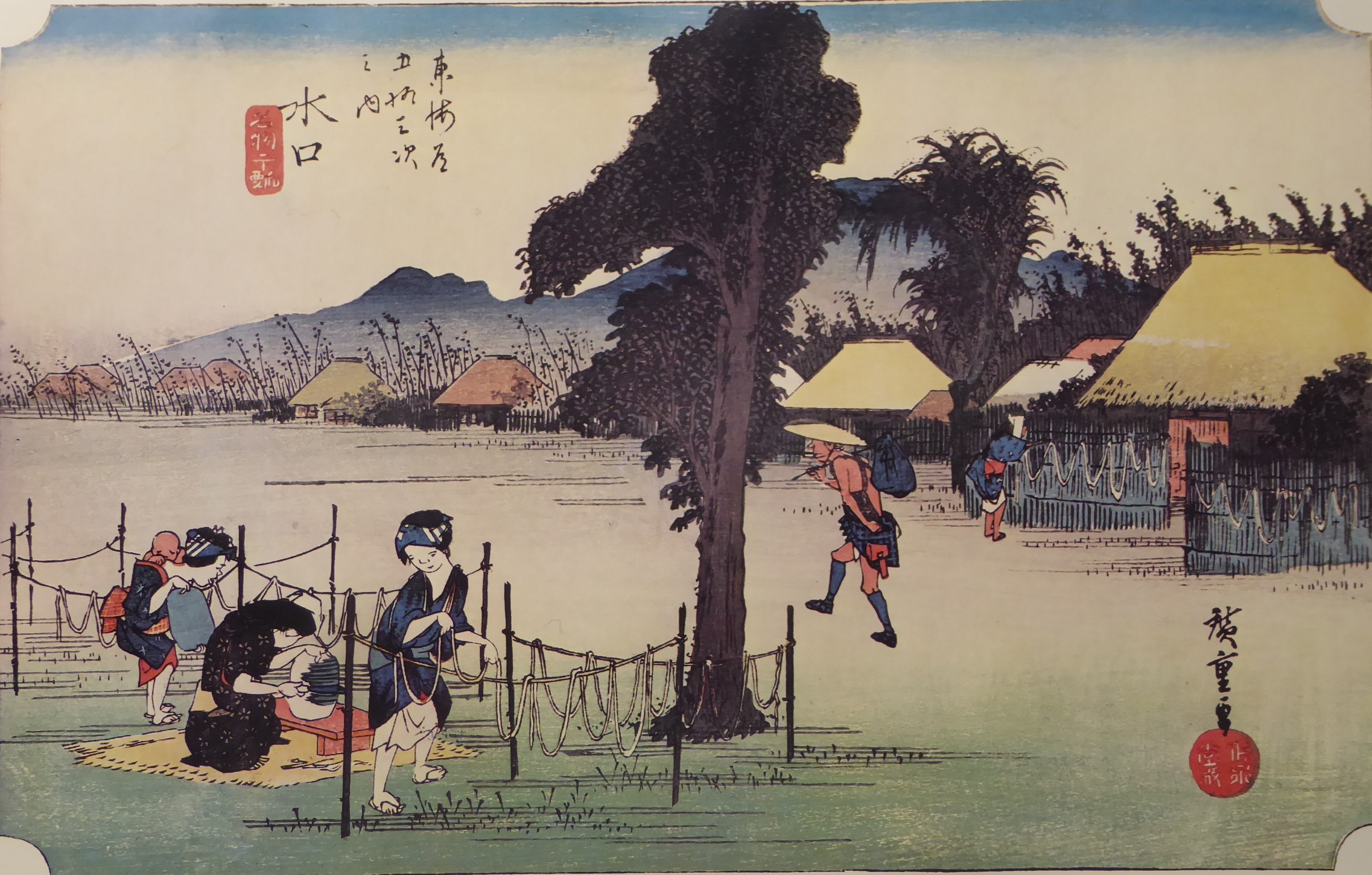Explanation of the 53 Stations of the Tokaido 51 Minaguchi
13.7km from Ishibe-juku to Minaguchi-juku Latitude 34°57’58″N 136°10’01” E
Minaguchi-juku is the 50th post station on the 53 stations of the Tokaido in Koka District,
Omi Province. Currently, it is the old town of Minakuchi-cho, Koka City, Shiga Prefecture.
Along with Tsuchiyama-juku, which is also located in Koka City, it is popular for its townscape that retains the scenery of a post town.
With the stone bridge as the border, the east side is a post town where the road splits into three lines,
and the west side is the castle town of Minakuchi Castle, where the road is the key.
Minakuchi Castle was built in 1634, and the Minakuchi clan was established in 1682, making it a castle town.
According to the 1843 Tokaido Inn Village Summary Book, there were 692 houses, 2,692 people, 1 honjin, 1 waki honjin, and 41 inns.
There are 351 houses in Tsuchiyama-juku. Compared to Tsuchiyama-juku,
the number of houses is overwhelmingly larger, which shows the prosperity of the time.
The main shrine was the Ukai Denzaemon family in Sakusaka-cho, and the Gigahikonojo family and Tsutsumi Bunzaemon family in Tenno-cho.
The inn was so popular that it was said to be the most crowded place on the highway.'' The food is famous for its loach soup. The Tokaido Meishoki says,Minaguchi-juku is a place where travelers for 360 days are served dozeu soup.”
There was also a major industry other than food. It is the phantom “Minaguchi-zaiku”.
At the end of the Edo period, more than 70,000 items using Minaguchi craft were being exported overseas after the country opened.
In the Showa era, the number of craftsmen decreased, and before we knew it,
craftsmanship became a “phantom” with no knowledge of the techniques or materials.
① “Hoeido version”
It depicts the pattern of making kanpyo, a specialty of Minaguchi.
Hangon is made by thinly peeling the pulp of Yugao fruit and drying it in the sun.
Tochigi Prefecture is No. 1 in the nation in terms of production of dried gourds,
with over 99% of the domestic production. However, now the number of products made in China is increasing.
Edible, low in calories and rich in dietary fiber. The cooking method is to rehydrate it with water.
It is then boiled and used as an ingredient in sushi rolls, stews, and aemonos.
On the left side, you can see a woman sitting on a straw mat, working hard to insert a knife.
The girl in the background carrying a baby on her back is holding the Yugao fruit that will be cut next,
and the girl in the foreground is drying the thinly peeled Yugao fruit.
There is also a woman drying Yugao fruit in a reed screen in the back right corner.
We can see the daily life of the mountain village through the hard work of these women.
② “Gyosho version”
“Kichinjuku” is written in large letters on the shoji screen. This thatched house is a wooden rental inn.
Kichinyado is a cheap accommodation where you can pay for fuel and cook your own meals.
The person who is beating straw in front of the inn is probably the owner of this inn.
➂“Reisho version”
It depicts the famous place “Hiramatsu “.
It has the same composition as “Hiramatsu Mimatsu” in the Kansei version of the Tokaido Famous Places Zue.
Utsukushi pine grows in clusters only on the slopes of Mt. Bishozan in Hiramatsu, Konan City, Shiga Prefecture.
This is a beautiful and extremely rare pine tree with a trunk that splits into multiple parts from near the base.
Its natural habitat has been designated as a national natural monument.
④ “Hokusai version”
Same as the Gyosho version, it has the composition of Kokuryado.
The signboard says “Tokoroten”.
It may be the specialty of Tokoroten.
⑤ “Travel images”
It will be part of the facility where my stayed.
⑥ “Stamp image”
This is a ticket to Minaguchi Station.
“Hoeido version”
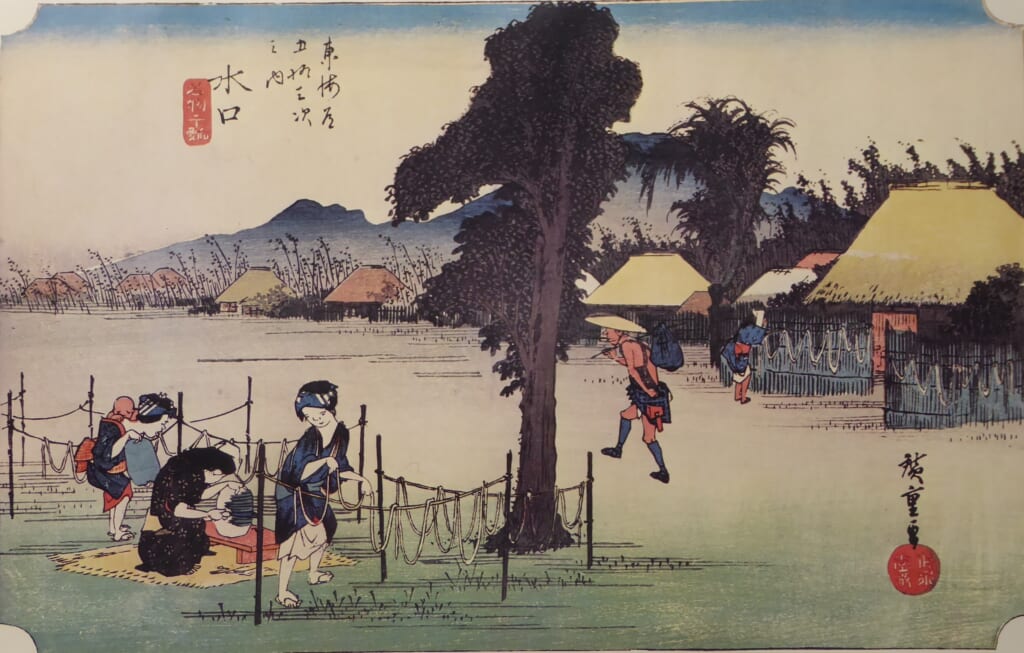
“Gyosho version”
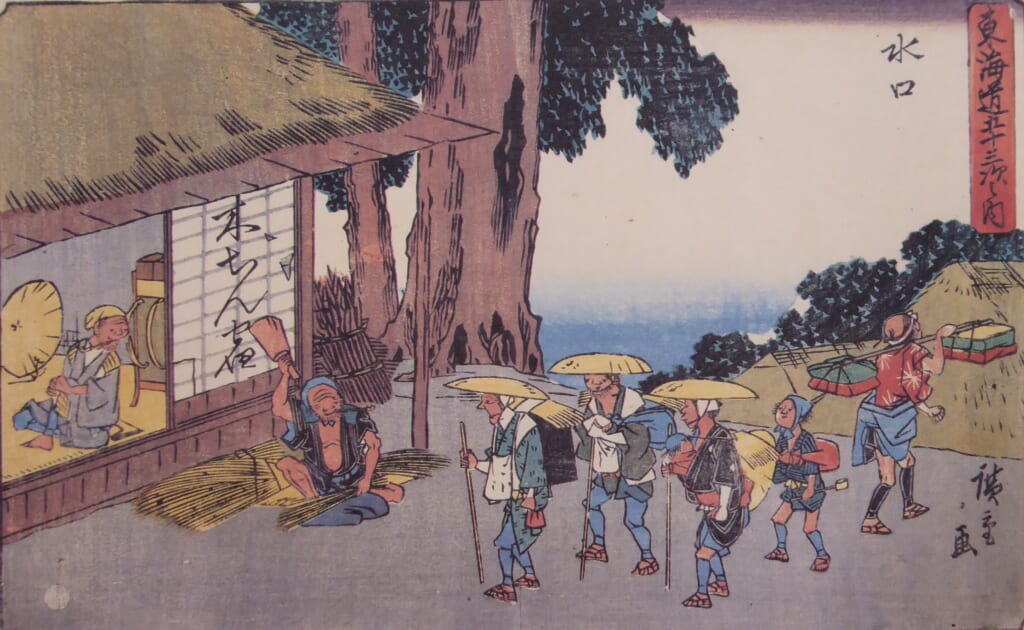
“Reisho version”
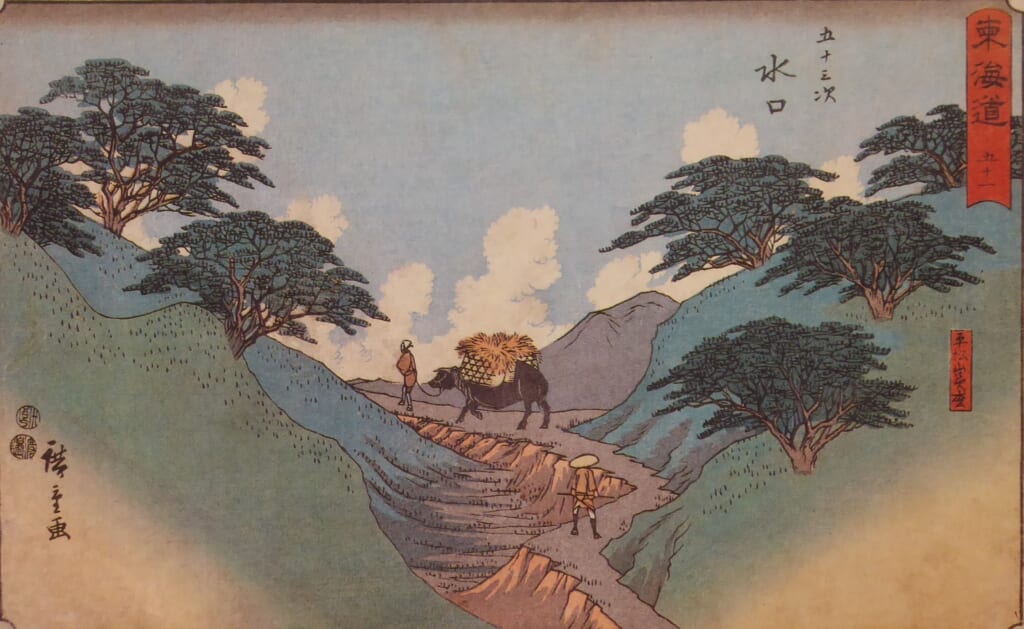
“Hokusai version”
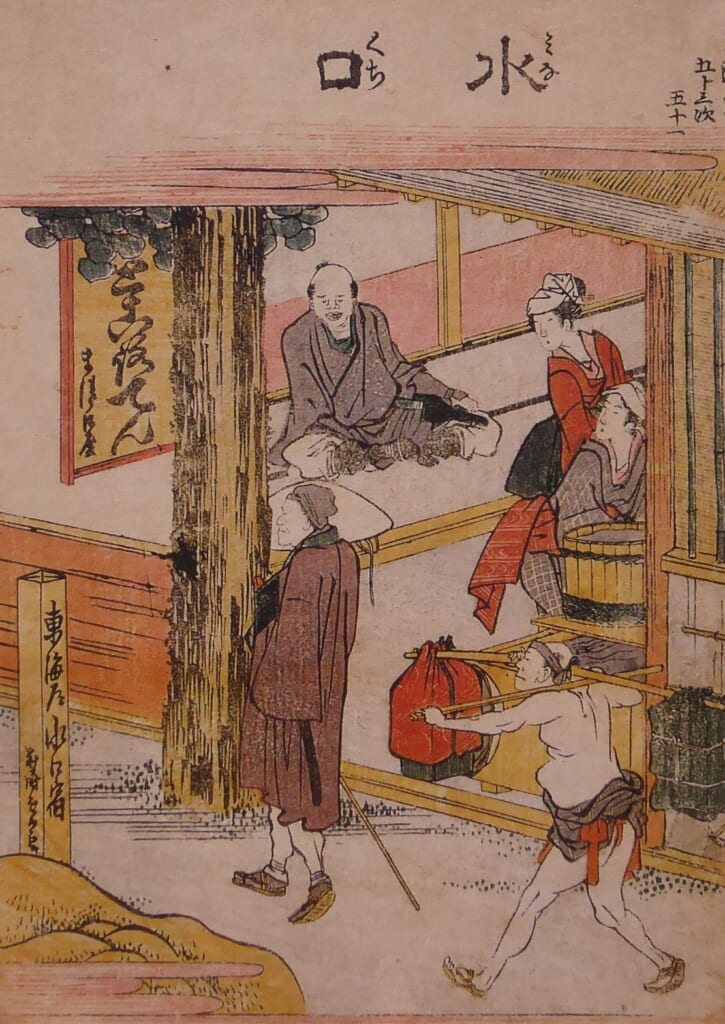
“Travel images”
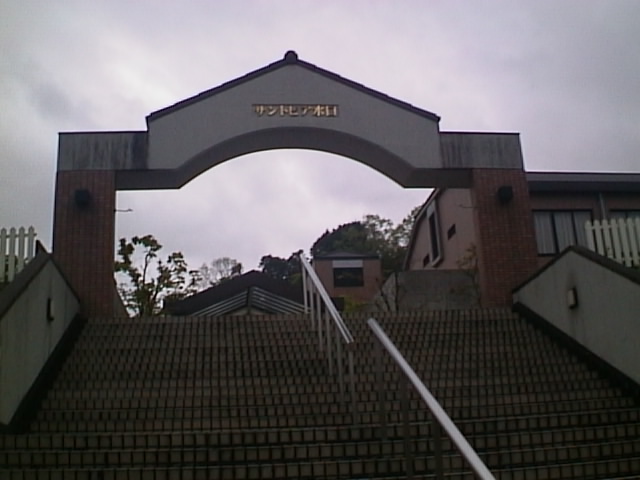
“Stamp image”
